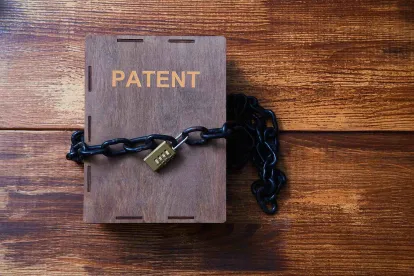One of the most common responses to being sued for patent infringement is a petition to the USPTO’s Patent Trial and Appeal Board (PTAB) challenging the validity of the patent. To avoid duplication of effort, either the Board or the tribunal can defer to the other. According to a recent decision, the U.S. International Trade Commission (ITC) will not defer to the PTAB in such situations. In Certain Automated Storage and Retrieval Systems, Robots, and Components thereof (337-TA-1228), Judge Lord emphatically confirmed that in order to conclude its investigations “at the earliest practicable time,” the ITC should not stay a Section 337 investigation in view of an Inter Partes Review (“IPR”) proceeding at the PTAB, even where this might deprive an accused infringer of the opportunity to have the PTAB review an asserted patent prior to the issuance of an Exclusion Order.
The ITC is required to conclude its Section 337 investigations “at the earliest practicable time.” See 19 U.S.C. § 1337 (b)(1). The ITC has been steadfast in adhering to this requirement, making the ITC a favorable venue for patent owners to enforce their rights against infringing products imported into the United States. The ITC has become even more advantageous in this respect after enactment of the America Invents Act (“AIA”) and the introduction of IPR proceedings before the PTAB. Although U.S. District Courts have often stayed patent litigation pending the outcome of IPRs at the PTAB, the ITC has refused to stay its investigations in similar circumstances.
The PTAB is now considering the status of co-pending litigation when deciding whether to institute review of a patent, relying on its discretionary authority under 35 U.S.C. § 314(a) based on the so-called Fintiv factors, as discussed here and here. In particular, the PTAB has recently suggested it is likely to deny institution of an IPR where there is an ongoing and rapidly progressing litigation, in U.S. District Court or at the ITC, involving the same patent.
Critics of the PTAB’s consideration of the status of co-pending litigation as part of its discretionary analysis have noted that under the current standard, the presence of a co-pending ITC investigation will result in the denial of institution of an IPR in virtually every case. Thus, these critics argue, the current PTAB standards improperly shift the power to decide the validity of a patent from the PTAB to another governmental agency. In the minds of these critics, the PTAB should not stay its proceedings in view of an ITC investigation; rather, the ITC should stay its investigations pending the outcome of an IPR. (See, e.g., IPR2020-000754, in which the petitioner has requested that the PTAB’s Precedential Opinion Panel issue a ruling excluding the timing of ITC investigations as a consideration under the Fintiv factors.) Judge Lord’s decision strongly disagrees with these critics.
The ITC instituted Investigation No. 337-TA-1228 on November 2, 2020. Very quickly thereafter, between November 30, 2020 and January 18, 2021, the Respondents filed four IPR petitions and one post grant review (“PGR”) petition, asserting invalidity of all the asserted patent claims.
On January 19, 2021, the Respondents filed a motion seeking to stay the ITC investigation pending resolution of the PTAB proceedings, well before the PTAB had even rendered a decision on whether to institute proceedings. The Respondents argued that the ITC’s practice of refusing to stay investigations in view of PTAB proceedings effectively denies Respondents in ITC Investigations the opportunity to challenge the asserted patents at the PTAB. Citing the fact that nineteen IPR petitions were denied in recent months based on a co-pending ITC investigation, the Respondents argued that the PTAB likely would deny institution of their petitions absent a stay of the investigation. Thus, they argued, unless a stay is granted in the ITC, patentees can force respondents to litigate the validity of a patent at the ITC, rather than at the PTAB.
Judge Lord was not swayed. She denied the Respondents’ Motion to Stay without even considering the Complainant’s Opposition (which was rejected for failure to comply with the ground rules), holding that none of the five factors considered in a motion to stay an ITC investigation weighed in favor of a stay. In particular, she found that the PTAB was unlikely to conclude its proceedings before the ITC concluded the investigation and, even if the PTAB did conclude its proceedings, there was no indication that the PTAB would invalidate all asserted claims. Thus, staying an ITC investigation in these circumstances likely would more than double the time for the ITC to complete the investigation, which is counter to the statutory requirement that the ITC conclude its Section 337 investigations “at the earliest practicable time.”
Judge Lord indicated that the Respondents’ ire at the ITC is misplaced, explaining that, for many years, the ITC has consistently refused to stay investigations in order to meet its statutory requirement to conclude investigations at the earliest practicable time. Judge Lord noted that Congress was aware of the ITC’s jurisprudence when it enacted the AIA and there are indications that Congress did not intend that ITC investigations should be stayed based on IPR petitions. For example, when Congress previously recognized the desirability of staying cases involving the same patent in different fora, Congress enacted legislation to bring about that result. For example, 28 U.S.C. §1659(a) requires that a district court stay litigation in view of an identical section 337 investigation. Moreover, when Congress enacted the AIA, it clearly legislated with the ITC in mind. For example, 35 U.S.C. §315(e) and 325(e) preclude a party from relitigating issues in subsequent proceedings in district court, before the ITC, or before the Patent Office. Finally, as provided in 35 U.S.C. § 315(b),the AIA also requires that a respondent file for PTAB review within a year of the filing of a district court or ITC complaint.
Judge Lord acknowledged Congress’ intent in enacting the AIA was to establish a more efficient and streamlined system to improve patent quality and limit unnecessary litigation costs. Judge Lord also acknowledged Congress’ purpose under the AIA may be thwarted by the PTAB’s refusal to institute review whenever an ITC investigation is ongoing. But, that would argue for Congress and/or the PTAB to modify the PTAB’s current practices, not for a stay of ITC Section 337 investigations.
In view of Judge Lord’s decision, the ITC continues to be a favorable venue for patent owners seeking a fast resolution against infringers. Not only does the ITC continue to resolve cases at a much faster pace than U.S. District Courts, but also the ITC will not delay resolution of the matters before it when there is a slower, parallel proceeding at the PTAB.




 />i
/>i

